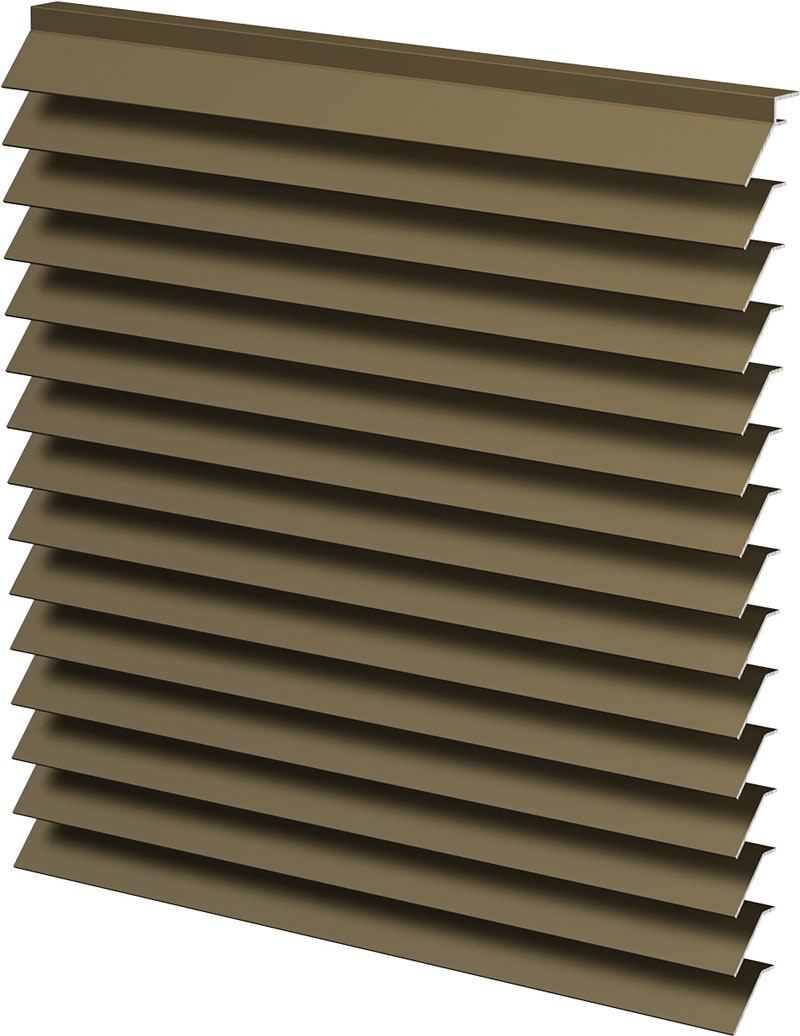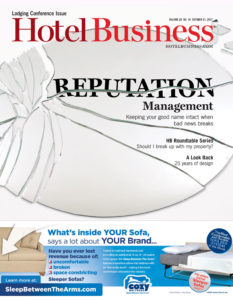NATIONAL REPORT—While it may be a one-in-a-million chance that a review of a hotel comments on them, packaged terminal air conditioning (PTAC) louvers are not only essential to the operation of the wall units, they also add to the look of the property’s exterior.
“Without a PTAC louver, all the parts inside the unit are exposed,” said Jim Lamm, business development manager for Geneva, AL-based Reliable Architectural Products. “You don’t want to expose these parts to any hazards that can damage these expensive pieces of equipment. PTAC units will probably work fine with a proper stamped metal or plastic grille, but they won’t be nearly as durable or attractive—and won’t last as long as one of our aluminum architectural louvers.”
He added, “The louver also protects the inner workings from flying objects, birds and other hazards, and provides an added level of security against tampering from the outside.”
Louvers also help the PTAC unit work at its optimum level. “The purpose of the louver is to direct the airflow to the correct part of the PTAC,” noted Mark Kaiser, VP of sales and marketing for Monett, MO-based WinTech Inc. “This is achieved by the slope and design of the louver blade and the amount of free air the louver itself allows into the unit. Not enough air can cause the unit to overheat, while too much air will not cool it properly.”
Hoteliers also choose louvers based on how they will appear on the outside of the property, said Lamm. “They really add to the overall appearance and visual appeal of a hotel. They cover up the PTAC unit’s cooling coils, giving a finished appearance to the street-facing side of the unit.”
No two PTAC models are exactly alike, so the louver installation process differs. “A majority of louvers appear similar at first evaluation, although each manufacturer’s brand of PTAC requires slightly different configurations of attachment, vertical strut bar placement and air diffuser plate design,” said Gary Macdonald, business development manager/national accounts at Greenheck, based in Schofield, WI. “Correct placement of these variables is critical to optimal alignment, installation and performance. Vertical struts also assist in segmenting of airflow during operation air intake and exhaust functions.”
Macdonald noted that his company produces two primary variations of louvers in both framed and frameless versions, each with a horizontal blade design and all-aluminum construction.
“All louver products are configurable to a multitude of size requirements and the color palette is limitless. [We offer ] 24 standard colors combined with the ability to accommodate custom color requests,” he added.
WinTech—which has supplied products to most major hospitality chains throughout the U.S.—currently manufactures six different PTAC and free-airflow louver options including impact-rated and Florida Product Approval (FPA) models.
“WinTech offers 15 different standard finish options in all louvers,” Kaiser said. “We also have the capability to match most colors.”
Reliable Architectural Products provides louvers for branded hotels and independents, noted Lamm. “Our louvers come in all standard sizes and we can do custom oversized louvers for new-builds and remodels,” he said. “We work with window companies to provide a nearly seamless integration.” HB



